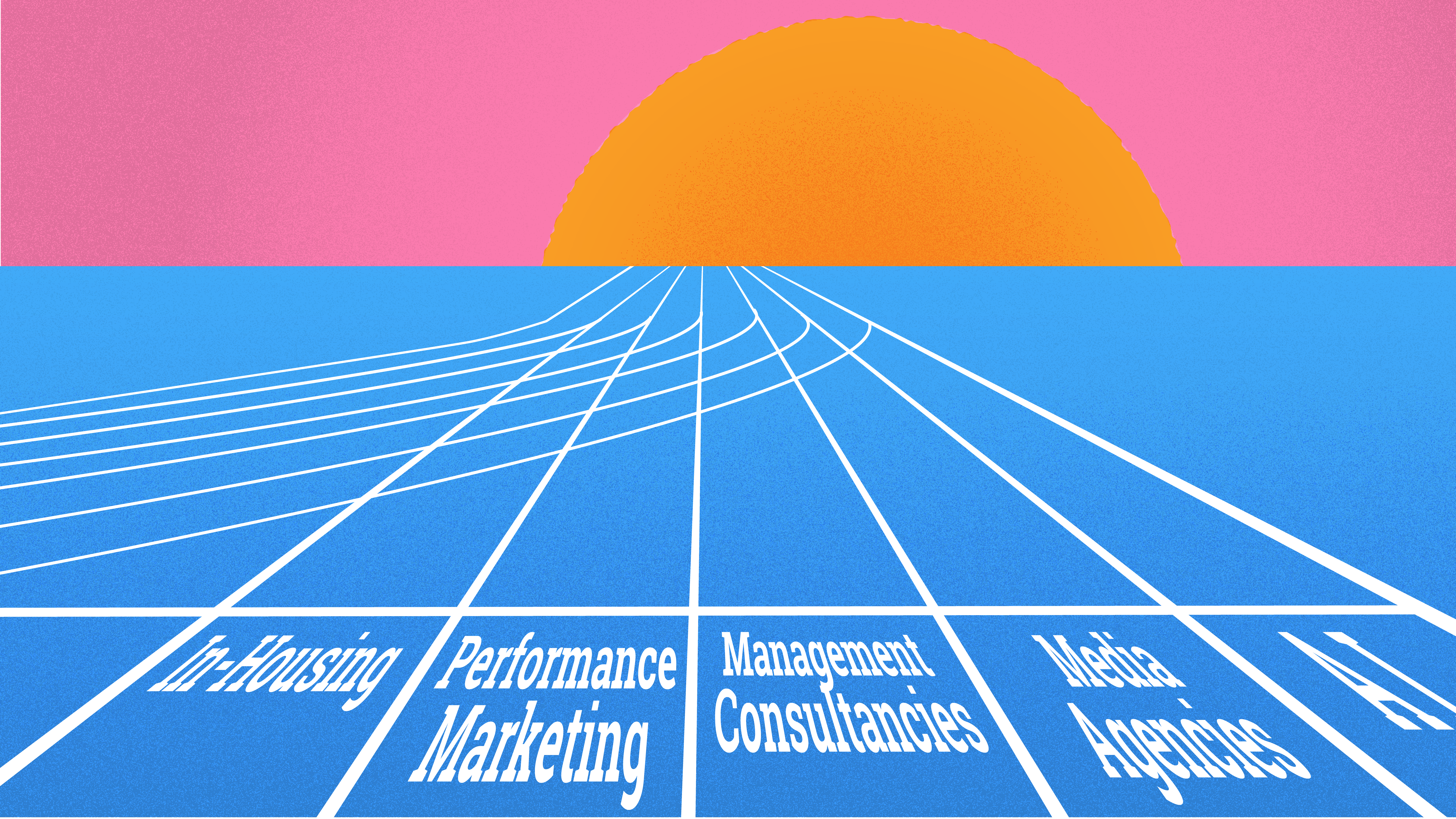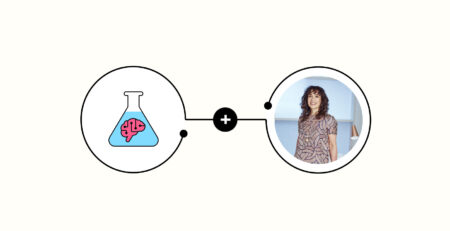The battle for the future of media
Naming things isn’t easy in this industry, from what you call yourself as a company to the way you describe your services. Brainlabs currently calls itself a ‘performance marketing agency’; not too long ago it was a ‘PPC agency’, and before that it was once an ‘innovator in paid media’.
Still, at least we’ll never be called a ‘cagency’. For those who haven’t come across the term yet, a cagency is the hybrid of a consultancy and an agency. Names like that are what happen when management consultants try their hand at creative work. Whether or not the name sticks, I find the neologism interesting as a symbol of the media industry’s ongoing existential crisis. The market is evolving, drawing in new players whilst pressuring everyone within it to adapt.
When the dust of this transitional period has settled, there are going to be five main competitors within media. For now, let’s keep management consultancies and media agencies as two separate types of business. Also on the list are performance marketing/biddable agencies, which are discrete from media agencies based on a fundamental difference in business model. Some of the market will be owned by in-house teams, a trend which looks set to increase. And, finally, we can’t forget about artificial intelligence – a technology which will eventually blow us all out of the water, in theory.
So those are the five. The question is which of these five will become dominant, and to what extent? I’d like to share my prediction of how the market will be divided in the new era of media. But first, let’s try to define what the future of media will actually be like: how will it differ from the past and current versions of the industry?
A new era of ‘biddable’ media
It seems uncontroversial to predict that all media will be biddable within the next ten years. There is plenty of evidence to discuss in relation to this claim, but that’s not the point of this article. For now, I would just like to apply a rule of thumb for predicting the near-term of any industry: look at what the most innovative companies are doing. In the context of media buying, that’s Google and Facebook, who have revolutionised PPC, display and paid social advertising by creating platforms that enable real time purchase and measurement of these types of media; it’s only a matter of time before other types of media such as linear TV and Radio follow suit.
‘Biddable media’ is a term I’m going to use a lot, so let’s make sure there isn’t any uncertainty regarding its meaning. Traditional media is typically purchased upfront via an insertion order, driven by cost efficiency for volume, whereas biddable media is purchased through real-time bidding in a live auction with a focus on efficiency through targeting the right users. Biddable currently encompasses paid search, paid social, and programmatic display, which has expanded to also include video, TV, native, and digital out-of-home (OOH).
The crucial point about biddable media is that advertisers don’t need an intermediary to buy it for them. Google and Facebook, amongst others, have made it easy for advertisers to cut out the intermediary, which an increasing number of brands have done, to varying degrees. In the biddable era, there will no longer be a purpose to media agencies whose value relies on at least some media inventory still being purchased, packaged and resold. The media agency in its current guise — at least as a business model — will come to an end, but the demand for external support will surely survive. In a biddable world you don’t need a buyer. You just need an expert.
How the market will be divided
Nobody is going to ‘win the battle’ for the future of media. Look at any market, and there is always at least more than one type of business in competition. Retail will not become entirely dominated by ecommerce platforms, just as TV and film won’t become the sole dominion of Netflix et al.
With that in mind, rather than picking a winner, I’d like to make a rough prediction of the percentage market share that each of these five competitors are likely to gain in the new era of media. When is this ‘new era’? For now, let’s focus on ten years from now — far enough into the future for programmatic to have become the primary mode in which all media is bought.
Media agencies = 15%
By media agencies, I am exclusively referring to the companies whose business model relies on reselling media inventory, amongst other media services. As discussed earlier in this post, the growth of biddable media will eventually destroy this fundamental part of the media agency’s model. Media agencies will need to completely reinvent themselves in order to survive.
Despite their current magnitude, and despite the benefits of experience and a very well developed network, I just can’t see it happening fast enough. For one, there is a scarcity of historical precedent. When the economics of an industry change as quickly as they are in media, the window is too compressed for anyone to adapt to the extent that media agencies need to. The average lifespan of large organisations has dropped from 60 to just 18 years in the last 60 years, and the percentage of companies leaving their industry top three rankings increased from 2% to 14% from 1960 to 2008.
We’re seeing the same thing happen with high-street shops. And, as with retail, as with news, there will be some survivors, but the majority will be displaced. Media agencies would need to change their model, and replace or seriously retrain the majority of their staff — the skillsets are so different for biddable media.
Still, it seems plausible that one or two of them will manage it. They have economic power at the moment, which could be used — as we have already seen happening — to acquire specialist agencies, recruit talent, develop a tech stack, and begin honing their skills in biddable. So I wouldn’t anticipate the death of the media agency — but certainly the death of the media agency as we know it.
Management consultancies = 25%
Management consultancies are in a good position to take over more media planning operations. They’ve been acquiring some of the largest independent agencies in digital (no less than 14 agencies by Accenture in the past five years), and are making big leaps into ‘cagency’ territory. They’re business model is spot on, they have global scale, and C-level access.
However, biddable media requires specialists, not generalists. It will be tough for consultancies to compete with businesses that have expanded purely on the basis of their expertise within PPC and paid social. Biddable is old enough now to have allowed agencies operating within this space to have matured, stockpiling technology and refining processes. Brian Whipple, CEO of Accenture, has said himself that he doesn’t see the company moving aggressively into the competitive media buying scene.
That’s not to say there’s no space for management consultancies in media. They are well-suited for advising clients on trends and helping them set up in-housing operations. Their promise to increase transparency and combat ad fraud will certainly be appealing to many advertisers.
In any case, more competition is a good thing for the industry, and might lead agencies to think about how to develop and improve their services. We all have the same goal of enabling business growth, and we have different ways of doing it. Maybe we can learn something from each other along the way.
Performance marketers (a.k.a. biddable media agencies) = 35%
If you believe that media is to become more biddable and the demand for transparency is increasing, then performance agencies have the right foundations to take more market share. If they have survived up to this point, it will generally be down to a track record of using automation and data to deliver results for their clients. Their business model has always relied on managing campaigns on behalf of clients, with transparency as the baseline expectation. And, as scope of biddable expands to the likes of TV, the skill set of performance marketers will increase further in value.
Performance marketers also benefit from the flexibility of their service model. Their flourishing needn’t be at odds with the in-housing of media buying — not if these agencies are able to work with advertisers to support this process. Most performance marketing agencies have always had a business model that charges for time and materials, which makes for an easy transition to consulting with in-house teams.
Advertisers should have the freedom to choose how much support they want from an external party. Some advertisers will still want a fully managed account, while others will just need someone to develop a bespoke piece of technology and nothing more. Whatever is needed, performance marketing agencies will be well placed to serve their interests, so long as they are truly flexible in their offering.
In-housing = 25%
In a nutshell, the in-housing trend refers to bringing external operations into a company, for example by setting up creative teams or doing media-buying internally. Just recently, P&G announced more agency cuts. More brands and advertisers are sure to follow.
At the end of last year, the ANA reported that 35% of advertisers had expanded their in-house programmatic display media-buying and reduced the role of external agencies, which is more than double the percentage of 2016.
It’s no surprise that after all the transparency issues in the past year, brands are expressing a desire to control their own data. If you can buy media without a media agency, and avoid transparency issues along the way, moving programmatic media-buying in-house makes perfect sense.
So far, a lot of in-housing seems to be partial, with agencies developing tech stacks and offering consultancy services. There’s no one-size-fits-all formula for in-housing. Some things should always be in-house: data ownership, budgeting, brand and commercial ownership, and strategic direction. Other things, like auditing, bespoke technology and extra learning and development, shouldn’t be. The rest, which is a lot, is up for debate. There will be a whole range of service relationships being formed in the future, with agencies being involved to greater or lesser degrees. But I don’t see them being completely excluded.
In order to exist, agencies only really need to be able to build more expertise than clients can do themselves in house. Agencies are better at attracting talent – the expertise therefore follows.
AI = ??%
At some point, it will be 100%. But not in ten years.
Machine learning will eventually change the game for digital marketing. Automation is already key for achieving substantial results in paid search, and one day machines will be the best decision-makers when it comes to bidding, targeting, and even ad copy. As AI takes over more and more of media, it will also advance the market share of agencies over time.
There are already ‘autonomous digital marketers’ like Albert, an AI platform that takes care of media-buying, execution, and optimisation. There’s also IBM’s Watson Advertising, which automates media buying as well as a number of other marketing services. Like in-housing, AI is becoming increasingly attractive to brands who wish to have more control over their data and execution of marketing efforts.
For now, though, there’s no AI that can accurately identify consumer behaviour patterns and use machine learning to develop industry expertise comparable to a human’s. It will be a long time before an AI can consistently outperform a media agency.
Disruption is coming from all directions and the landscape has only just begun its restructuring. At the end of the day, clients want their media planning process to be transparent and cost-effective. How they choose to do this is up to them, but a blend of expert consultants and performance marketers is probably the way to go — experts who can combine the ever-changing technology with creativity to achieve remarkable results for clients.



